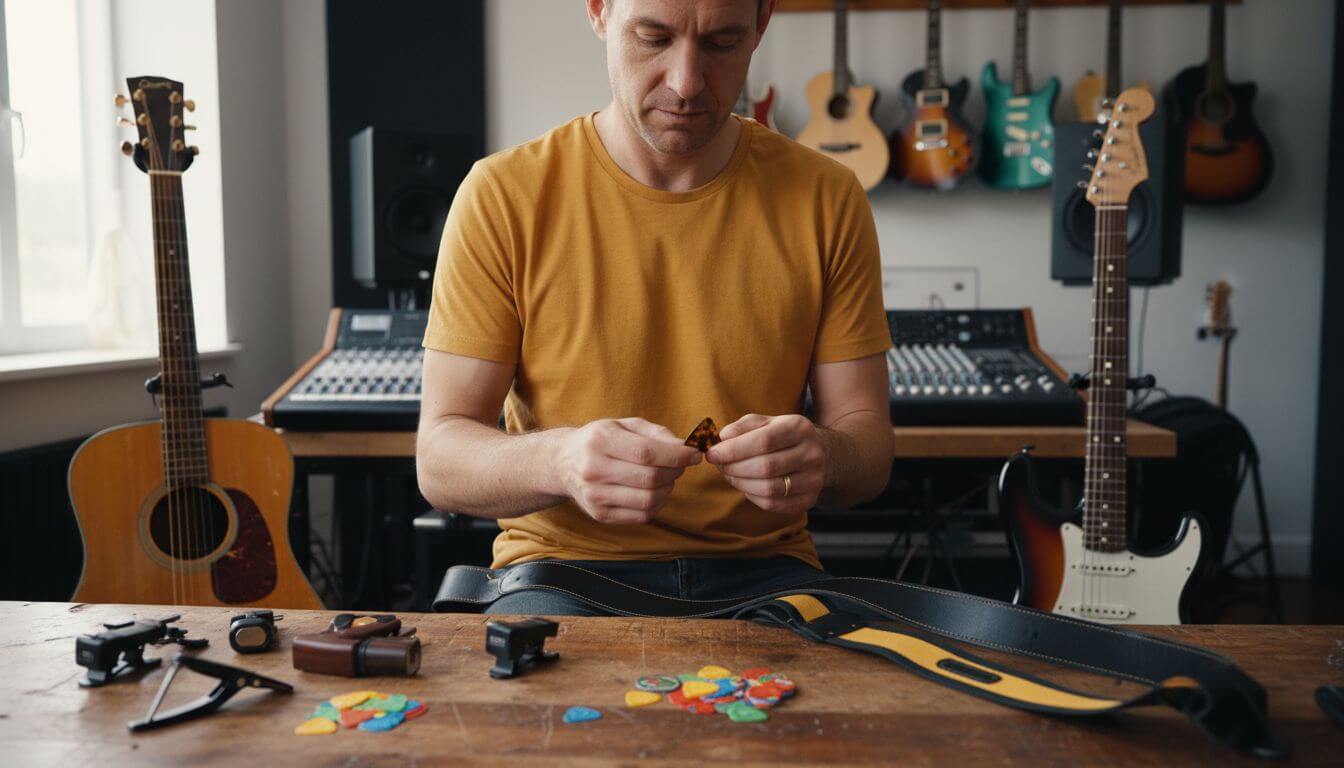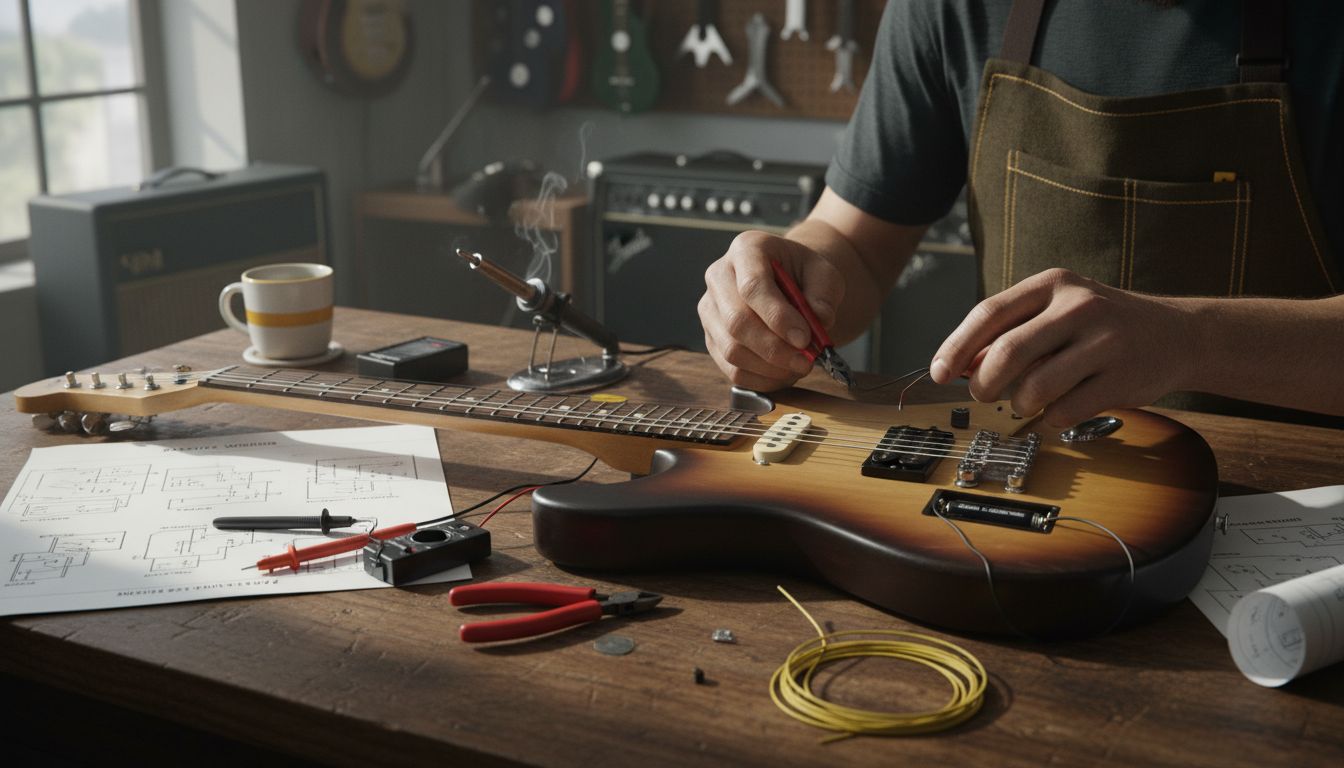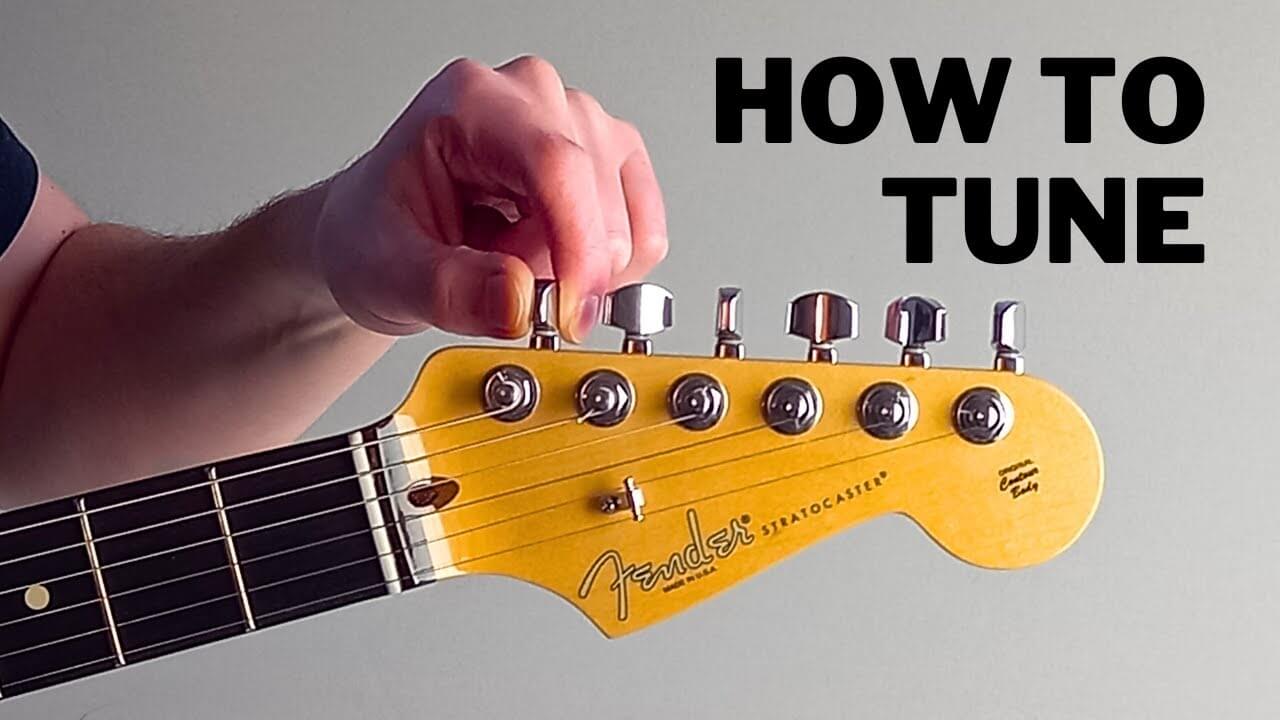Over 80 percent of guitarists say the right accessories transform their playing experience. Choosing gear is not just about filling your gig bag but about shaping your own unique sound and comfort on stage or at home. Whether you crave smoother chord transitions or crave more dynamic solos, understanding how to match your setup with your musical style makes all the difference. This guide breaks down practical steps for assessing your needs, comparing options, and finding quality accessories that support your evolving skills.
Table of Contents
- Step 1: Assess Your Guitar and Playing Style
- Step 2: Identify Essential Accessories for Your Needs
- Step 3: Compare Product Options and Brands
- Step 4: Test Compatibility and Quality
- Step 5: Finalise Your Accessory Selections
Quick Summary
| Key Point | Explanation |
|---|---|
| 1. Assess your unique playing style | Understanding your musical style enhances gear selection, tailoring accessories to your specific needs and technique. |
| 2. Choose essential accessories wisely | Select tools like tuners, extra strings, and capos that fit your style, ensuring comfort and versatility during performances. |
| 3. Compare brands and products effectively | Analyze quality, functionality, and personal requirements to select the best accessories rather than just focusing on price. |
| 4. Test for compatibility and quality | Ensure new accessories fit your guitar and enhance sound by examining mechanical fit and testing with your playing style. |
| 5. Finalize selections based on research | Prioritize accessories that enhance comfort and versatility, planning for gradual upgrades as your skills develop over time. |
Step 1: Assess Your Guitar and Playing Style
Understanding your guitar and playing style is the foundational step in selecting the right accessories to enhance your sound. This assessment helps you match gear precisely to your musical personality and technical needs. Researchers studying guitar techniques have developed sophisticated methods for evaluating playing styles, providing insights into how individual musicians can optimize their sound.
According to research from arxiv.org, musical style can be dramatically influenced by specific technical approaches. The ShredGP research model demonstrates that guitarists develop unique playing characteristics that significantly impact their sonic output. Start by considering key aspects of your playing such as genre, technique, and preferred musical expression. Are you a blues player who loves smooth bends? A metal guitarist focused on aggressive picking? An acoustic fingerstyle performer? Each style demands different accessory configurations.
To truly assess your style, record yourself playing and critically analyse your technique. arxiv.org highlights the importance of recognizing subtle nuances in playing techniques, which can help you understand what accessories might complement your sound. Pay attention to how you interact with your instrument the attack of your picking, your preferred chord voicings, and the dynamics of your playing. These observations will guide you towards accessories that amplify your natural musical voice.
Tips for effective assessment:
- Record multiple playing styles and techniques
- Listen critically to your sound
- Note areas where your current setup feels limiting
- Consider the genres you most frequently play
By thoroughly understanding your unique playing approach, you will make more informed decisions about guitar accessories that genuinely improve your sound.
![]()
Step 2: Identify Essential Accessories for Your Needs
Now that you have assessed your playing style, it is time to explore the guitar accessories that will elevate your sound and playing experience. Selecting the right gear is not just about purchasing items but strategically enhancing your musical capabilities. Dummies provides an insightful guide to the fundamental accessories every guitarist should consider.
According to Dummies, certain accessories are crucial for comfort and versatility. Key items include electronic tuners, which ensure precise pitch accuracy essential for professional sound quality. Extra strings are a must have, allowing you to quickly replace broken strings during performances or practice sessions. String winders help expedite string changing processes, while cleaning cloths maintain your instrument’s pristine condition.
Beyond basic maintenance tools, consider performance enhancing accessories. A quality capo expands your harmonic possibilities by allowing you to change key signatures effortlessly. Different picks can dramatically alter your tone quality pick thickness and material impact your sound significantly. For those who perform live or move while playing, a comfortable and robust guitar strap becomes an absolute necessity.
Pro Tip: Always keep a small accessory kit with you containing:
- Multiple pick sizes
- Spare strings
- Portable tuner
- Capo
- String winder
By carefully selecting accessories that match your playing style and technical requirements, you will create a personalised setup that supports your musical journey and artistic expression.

Step 3: Compare Product Options and Brands
Comparing guitar accessories requires a strategic approach that balances quality, functionality, and your specific musical needs. Dummies suggests that understanding the fundamental purpose of each accessory is crucial before diving into brand comparisons.
When evaluating accessories, consider multiple factors beyond just price. For electronic tuners, examine accuracy, display readability, and battery life. Dummies highlights that accessories like straps and capos should prioritize comfort and versatility. Examine the build quality, material durability, and how well the accessory complements your specific playing style. Pay attention to user reviews, professional musician recommendations, and seek demonstrations or trial periods when possible.
Creating a comparison matrix can help streamline your decision making process. List your top priority features vertically and potential brands horizontally. Rate each option based on key criteria such as:
- Price point
- Durability
- Performance quality
- Compatibility with your guitar
- Warranty and customer support
Remember that the most expensive option is not always the best. Your goal is finding accessories that provide the right balance of quality, functionality, and value for your unique musical journey. Trust your ears and playing experience more than marketing claims.
Step 4: Test Compatibility and Quality
Testing guitar accessories for compatibility and quality is a critical step in ensuring your new gear enhances rather than hinders your musical performance. Arxiv.org research on guitar technology underscores the importance of precise matching between accessories and instruments to achieve optimal sound quality.
The compatibility testing process involves multiple systematic approaches. According to Arxiv.org, technological research emphasizes the significance of meticulously checking how each accessory interacts with your specific instrument. Start by physically examining the accessory fitting mechanical compatibility such as string height for picks, capo tension, or strap attachment points. Play your guitar with each new accessory and listen critically to any changes in tone quality, sustain, or overall sound character.
Practical testing strategies include:
- Simulate different playing techniques
- Test accessories under various performance conditions
- Check for mechanical stress or unexpected friction
- Evaluate sound quality across multiple musical genres
- Assess long term durability through repeated use
Warning: A perfect fit goes beyond physical dimensions. An accessory might technically connect to your guitar but still negatively impact your playing experience. Trust your musical instincts and be prepared to return items that do not meet your specific performance requirements. Your ears and comfort are the ultimate quality control mechanism.
Step 5: Finalise Your Accessory Selections
With your comprehensive research and testing complete, the time has come to make your final guitar accessory selections. Dummies recommends a strategic approach to ensuring you have a well rounded set of essential tools that support your musical journey.
Review your comparison matrix and testing notes carefully. According to Dummies, the most critical accessories should enhance both your comfort and musical versatility. Prioritise items that offer the best combination of functionality, quality, and value. Consider creating a prioritised purchasing list if budget constraints require you to acquire accessories gradually.
Key considerations for finalising your selections:
- Match accessories to your specific playing style
- Balance quality with affordability
- Consider future musical growth and potential technique changes
- Invest in versatile accessories that serve multiple purposes
- Plan for periodic upgrades as your skills develop
Remember that building your guitar accessory collection is an ongoing process. Start with the most essential items that directly impact your playing experience and sound quality. Your selections should feel like natural extensions of your musical expression rather than arbitrary purchases.
Elevate Your Guitar Sound with the Right Accessories Today
Choosing the perfect guitar accessories can feel overwhelming when you are unsure what truly fits your playing style and needs. Whether you struggle with finding the best capo to match your technique or worry about the quality and compatibility of your picks and tuners, personalised guidance and premium gear can transform your music experience. The article’s focus on assessing your style and testing accessories aligns with our mission to help you make confident choices that bring out your unique sound.
At MusicStreet.co.uk, we offer a carefully curated collection of high-end guitar accessories, strings, capos, picks and more alongside expert advice to ensure every musician finds their perfect match. Explore how precision and quality come together to enhance your tone and comfort in one convenient place.
Explore our selection today and access detailed guides and support that help you test and finalise your accessory choices with confidence.

Discover premium accessories tailored to your style by visiting MusicStreet. Take the first step now towards a better sound and a truly personalised guitar setup that supports your musical journey every step of the way.
Frequently Asked Questions
How do I assess my guitar and playing style before choosing accessories?
To assess your guitar and playing style, record yourself playing various genres and techniques to identify your unique sound. Critically analyze your playing by listening to nuances in your technique, such as your picking attack and chord voicings.
What essential accessories should I consider for my guitar setup?
Consider starting with accessories such as electronic tuners for pitch accuracy, extra strings for quick replacements, and a good guitar strap for comfort. Additionally, adding a capo and different pick materials can expand your musical options and enhance your sound quality.
How do I compare the quality and functionality of different guitar accessories?
To compare guitar accessories, make a list of essential features such as durability, performance quality, and comfort. Rate each accessory based on these criteria and consider user reviews to help you find the best fit for your playing style.
What should I test for compatibility when trying new guitar accessories?
When testing for compatibility, check if the accessory fits your guitar correctly and assess how it influences your sound. Play with the accessory while simulating different techniques and ensure it feels comfortable under various performance conditions.
How can I finalize my selection of guitar accessories?
Review your research and testing notes to prioritize accessories that best match your playing style and budget. Choose versatile items that will support your musical growth and ensure they enhance your playing experience before making a purchase.




Share:
7 Inspiring Examples of Guitar Brands for Musicians
Step-by-Step Guide to Guitar Investment for Musicians